Despite the 2024/25 La Liga season still being in its infancy after only eight matches, a potential dark horse has begun to emerge amongst those teams chasing European qualification.
RCD Mallorca has started the season tremendously after finishing 15th in the league and suffering an agonising penalty shootout defeat in the Copa Del Rey final last season.
They continue to exceed even their own personal expectations, and a large reason for that has been the appointment of the ever-talented Jagoba Arrasate as their new head coach.
After building his reputation as one of Spain’s most impressive and intriguing young managers throughout his spell at Osasuna, Jagoba Arrasate’s coaching style has been able to find the right balance between implementing personal philosophies and leveraging this Mallorca squad’s current strengths.
Most notable would be Mallorca’s impressive defensive displays so far this season, which have frustrated the UEFA Champions League and La Liga champions in Real Madrid.
Carlo Ancelotti’s side was unable to effectively breach Arrasate’s defensive structure as the match wore on.
But even under previous manager Javier Aguirre, Mallorca were always synonymous with stout defensive performances and consistently frustrated their opposition with what was often regarded as an ‘impenetrable’ compact blockade.
So, what has changed under Jagoba Arrasate tactics to convert these defensive performances into crucial points?
Our tactical analysis and scout report will begin to explore some of Mallorca’s even more effective tactics in these early matches.
They have begun to break personal records for accumulating points and success away from home.
This analysis will illuminate Arrasate’s early defensive tactics in Mallorca and show how the Spaniard is building a new identity in his new surroundings during such an impressive period of transition.
RCD Mallorca Data Analysis
Before we begin to delve into some in-game examples depicting Arrasate’s success with Mallorca so far, it is important to understand some of the underlying statistics that have continued to provide objective support for Mallorca’s defensive strength.
When looking at some of the more basic statistics, we see that Mallorca have conceded the second lowest goals so far in LaLiga, bettered only by one of the most stout defensive units in world football in the form of Diego Simeone’s Atlético Madrid.
The narrative around whether or not such figures can be maintained throughout a prolonged period could also be supported by the fact that Arrasate’s side have only conceded an expected goals tally of 6.8xG.
This would suggest that despite a slight overachievement in that regard, Mallorca’s defensive strength isn’t necessarily based on luck or opposition inefficiency in front of goal.
When we examine Mallorca’s manipulation of their opponent’s attacking efforts more closely, we see that despite conceding the fifth-highest shots-on-target total so far (35), Mallorca has taken strides to ensure these efforts are consistently ineffective.
Mallorca consistently forces their opposition away from the penalty area, having only allowed 47.4% of their shots conceded to be taken in the box.
They also have an impressive 0.06 xG per shot conceded (La Liga’s best).
Jagoba Arrasate Style Of Play – Pressing Effectiveness
We will focus on Mallorca and Arrasate’s opening fixture at home to Real Madrid to understand more about some of their defensive structures across the opening La Liga fixtures.
It goes without saying that when coming up against one of the most dangerous teams on the planet, their opposition must be proactive and appear multi-dimensional to combat all types of attacking strategy — just as Mallorca did on this occasion.
Our first example highlights Mallorca’s 4-1-4-1 structure when pressing out of possession.
Muriqi is the first presser ahead of the midfield line, coinciding with Mascarell taking the opposite approach and dropping slightly deeper into the space between the lines.
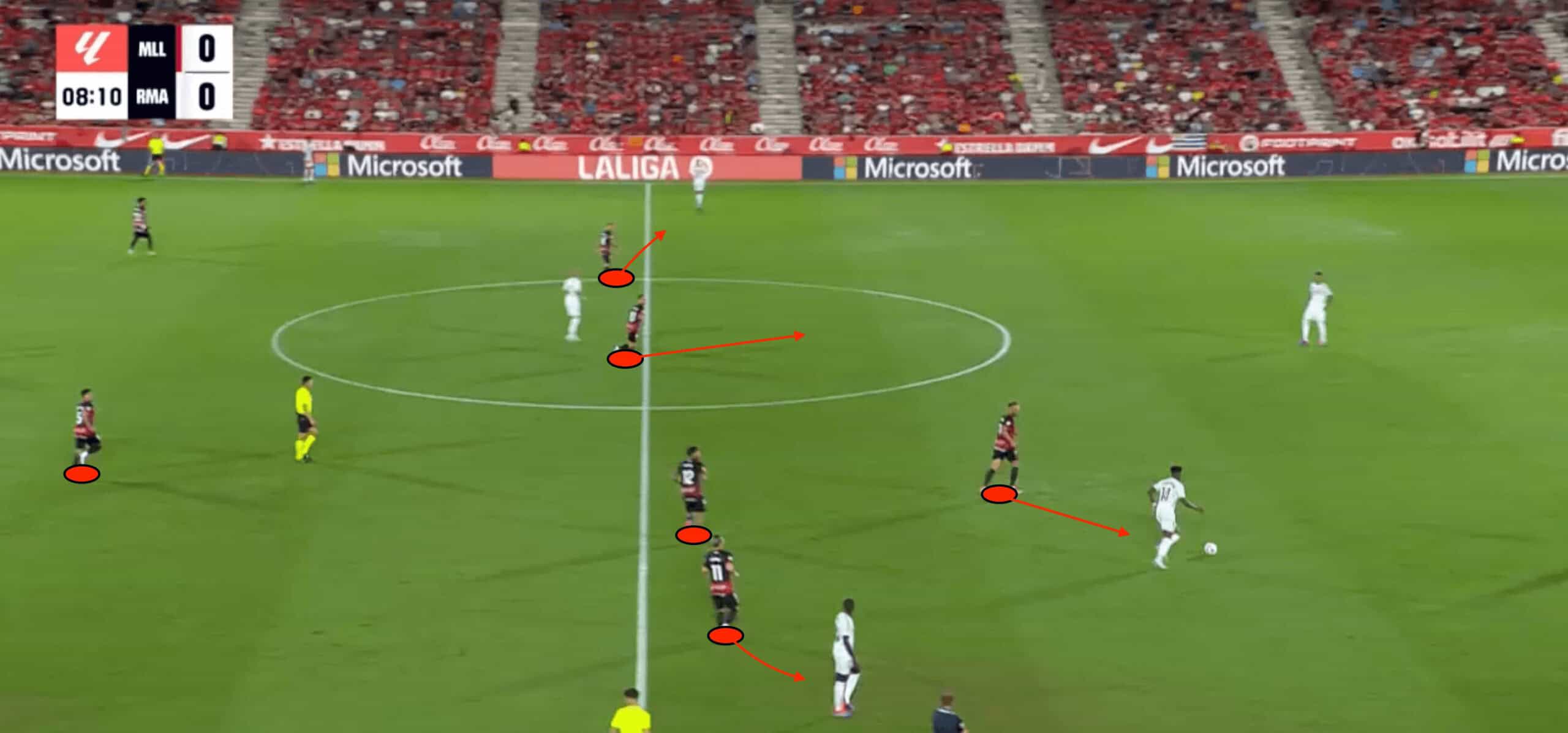
Such actions allow Mallorca to remain optimistic and impactful with their pressing whilst also negating key pockets of space, which the Real Madrid forwards could exploit when pulling away from the defensive line.
The key switch from this structure is when Mallorca have looked to press much higher when recognising certain triggers, as we see Sergi Darder exploding forward into space to accompany Muriqi as more of a pressing partnership.
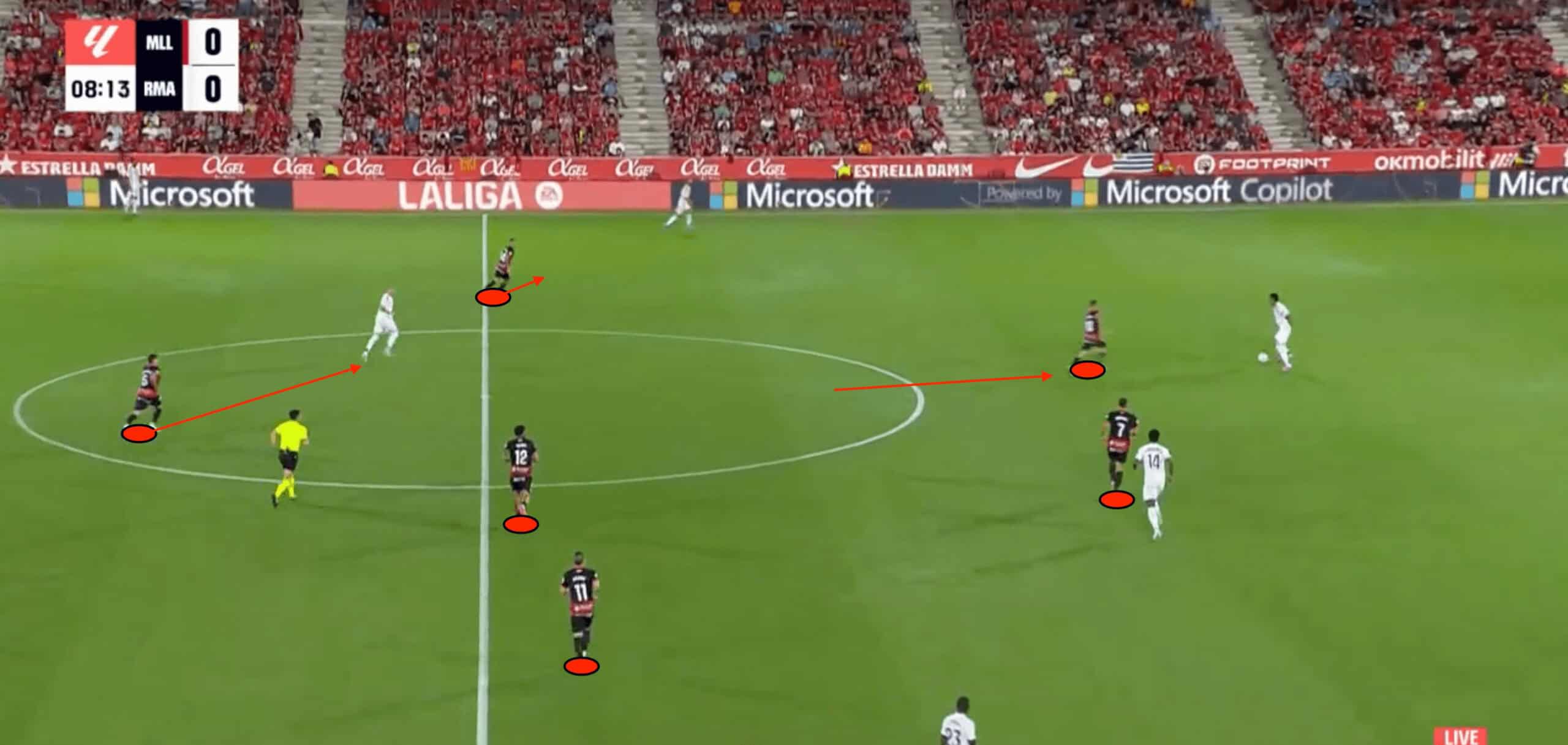
Decisions like these are crucial to Mallorca’s success without the ball and often result from game state and recognition of their opponent’s weaknesses.
Arrasate highlighted before the match that Real Madrid had struggled against Atalanta’s combative and relentless midfield, which had limited their central progression, especially in the absence of Toni Kroos, who could begin to manipulate space and bring life to their build-up.
Therefore, even against one of the world’s best, Mallorca were allowed to perform their defensive actions at a much greater depth than usual.
Mascarell was also shown to work in tandem with Darder by occupying his position as the Spaniard pushed forward.
It creates an interesting narrative about how Mallorca have changed so far this season, with Aguirre’s Mallorca often foregoing such opportunities to maintain their defensive barrier in front of their defensive line.
The rewards from such an aggressive mentality were on display against some of the weaker opposition compared to Real Madrid, with Mallorca able to stifle the Real Betis build-up deep in the offensive third due to Daniel Rodriguez’s energy and the team’s tight man-to-man marking downfield.

A stern, high-pressing effort also allowed Mallorca to secure all three points against Valladolid.
Valery Fernández was able to gamble on the opposition defender’s poor body shape when receiving the crossfield ball before creating a high turnover and firing past Karl Hein.

Containing Kylian Mbappé And Company
Even though Mallorca produced an impressive performance when defending within the middle and final thirds, it is perhaps of more importance to view how they perform in their own defensive third when mitigating the offensive strengths of a team like Real Madrid.
Throughout the first half, Madrid placed a huge emphasis on their attacking play within the left half-space, with their attacking superstars drifting across to overload Mallorca within this area of the pitch—ultimately allowing Rodrygo to open the scoring when coming inside off the left flank.
It was impressive to then see how Mallorca was able to nullify this threat as the game wore on, with particular interest in how their most conservative formation could account for the dynamic Madrid sequences over on that side of the pitch.
Our next example showcases Mallorca defending deep into second-half stoppage time.
A five-man defensive line is positioned incredibly low to negate any threat from runners in behind.
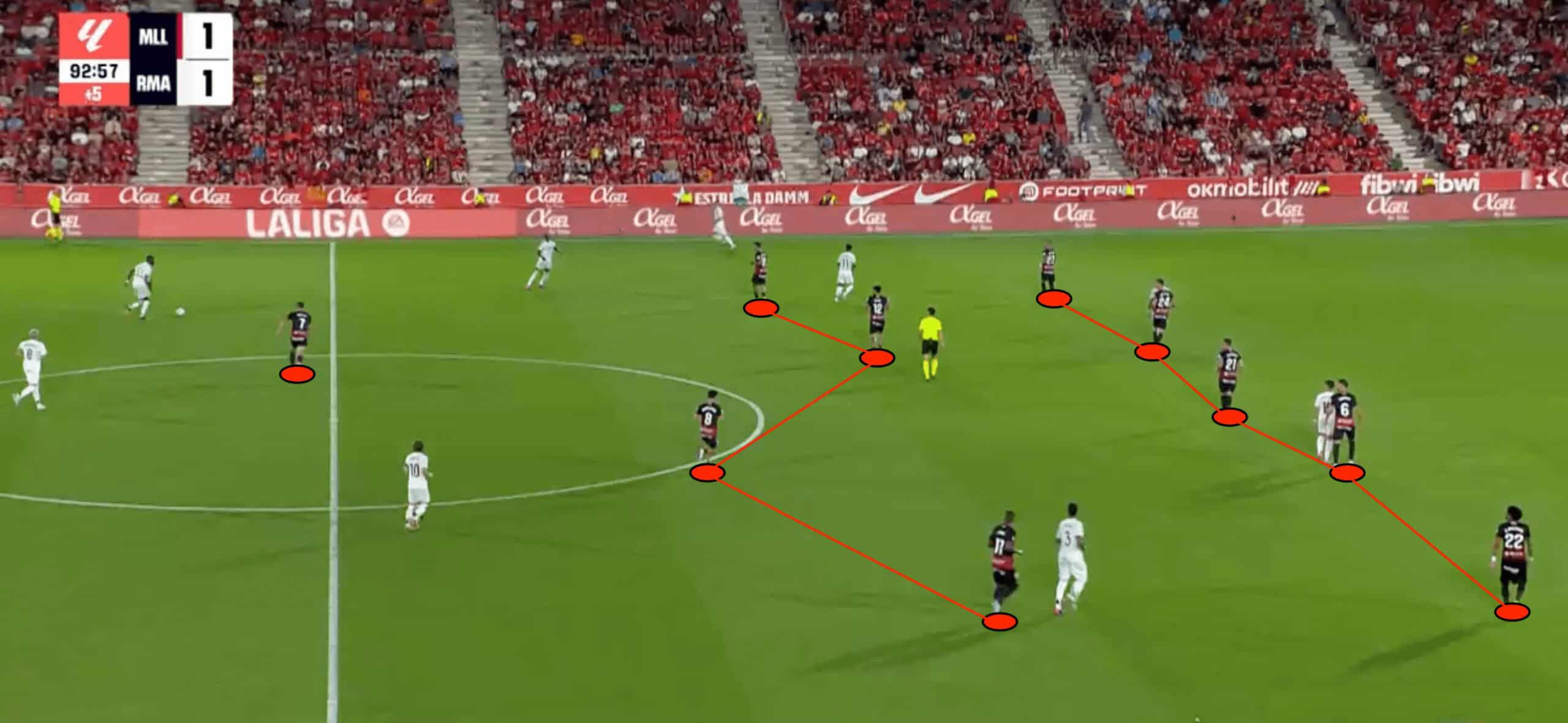
Madrid aimed to combat this with the attacking movement of Kylian Mbappé darting across towards the left wing to escape the clutches of Mallorca’s central defenders; with Rodrygo shown to pin his defender to give Mbappé more freedom.
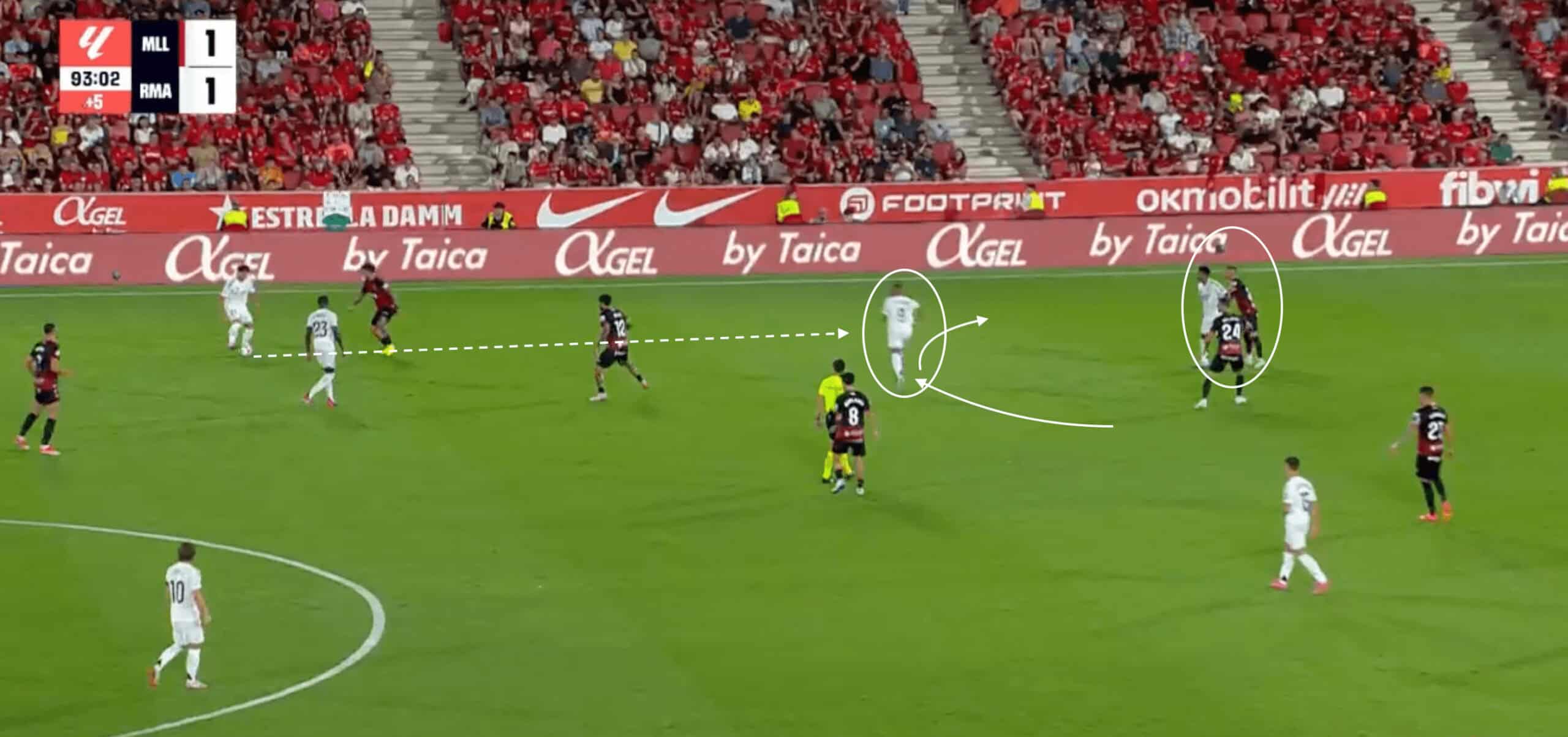
But crucially for Mallorca, their commitment to extra bodies towards Madrid’s left half-space meant that Mbappé’s progression was often fruitless and valuable attacking chances were few and far between.
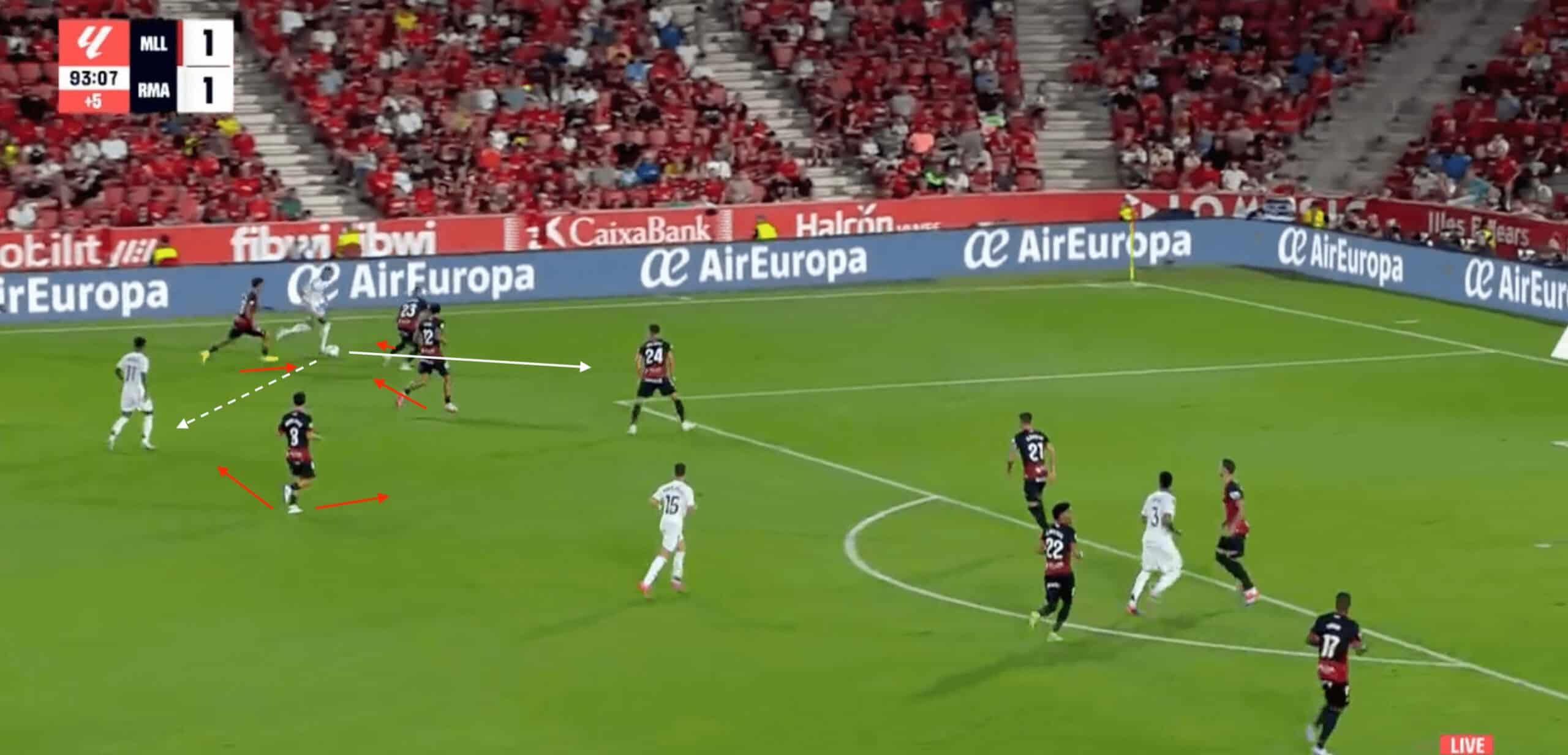
Manipulating Shot Selection
As we mentioned previously, Mallorca has excelled in preventing their opposition from taking shots close to their goal.
A lot of this stems from Mallorca’s ability to be compact in the final phase of opposition build-up play, with tight marking for runners into the box and often forcing the ball carrier inside the pitch where numerical advantages can create rushed opportunities.
For this example, we highlight an attacking transition for Villarreal.
Alex Baena drives into space with runners in behind as he approaches the penalty area.

The body positioning of the highlighted Mallorca defender is key in this instance, as he angles himself to invite Baena inside the pitch and away from the advantageous option of slipping the ball into his teammate—consequently, his shot is blocked by the Mallorca central defender from close proximity.
Efforts to protect the penalty area can also be unproductive when potential danger men are neglected in and around the edge of the penalty area, as we saw when Sergio Gomez was completely unmarked and able to produce an effort that just fizzed wide.

Whilst the club is still in this transitional period as it acclimatises to the needs of its new manager, it will be important to identify the moments in which Mallorca can be conservative but not to the point of inviting such overwhelming pressure.
Issues Between The Lines
One of the sacrifices Mallorca has had to make when pressing high up the pitch is that they now have a much more stretched team vertically.
Mallorca’s midfield is now much more involved in their pressing efforts.
Therefore, Mallorca no longer has two banks of four who move in a coordinated manner, leaving opportunities for their opposition to exploit space between the lines.
This was evident when Mallorca faced off against Betis.
In that match, Giovanni Lo Celso fired from range when the Mallorca defensive line had dropped deep towards the edge of their own penalty area.
Higher up the pitch, it allowed Betis’ ball progression to bypass Mallorca’s midfield and fire direct passes into the feet of the striker, who had drawn significant pressure from the opposing central defender.
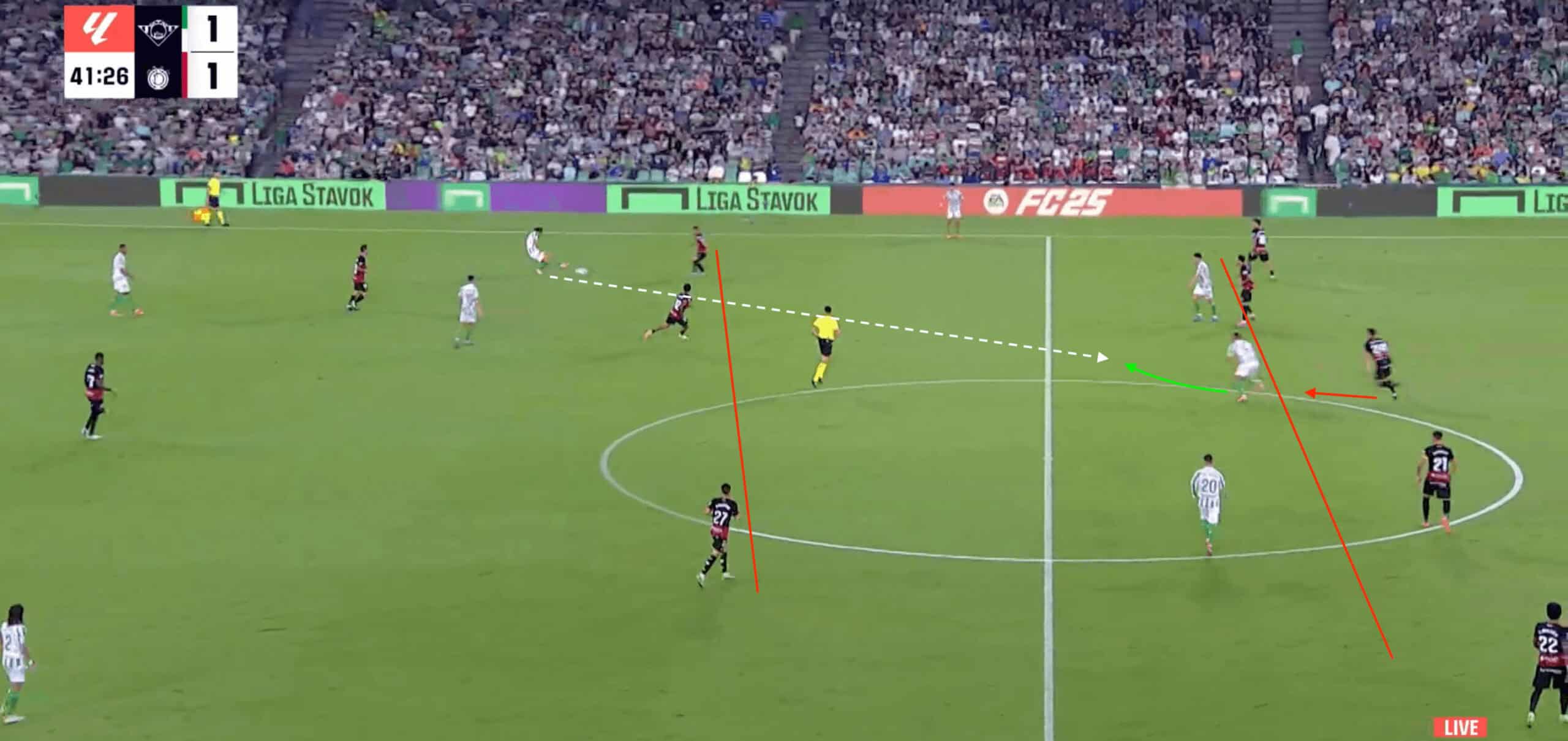
Proactive defending in scenarios like these can be effective in regaining possession.
Still, Mallorca’s current ranking of 19th in La Liga for defensive duel success (60.1%) doesn’t exactly instill fans with confidence.
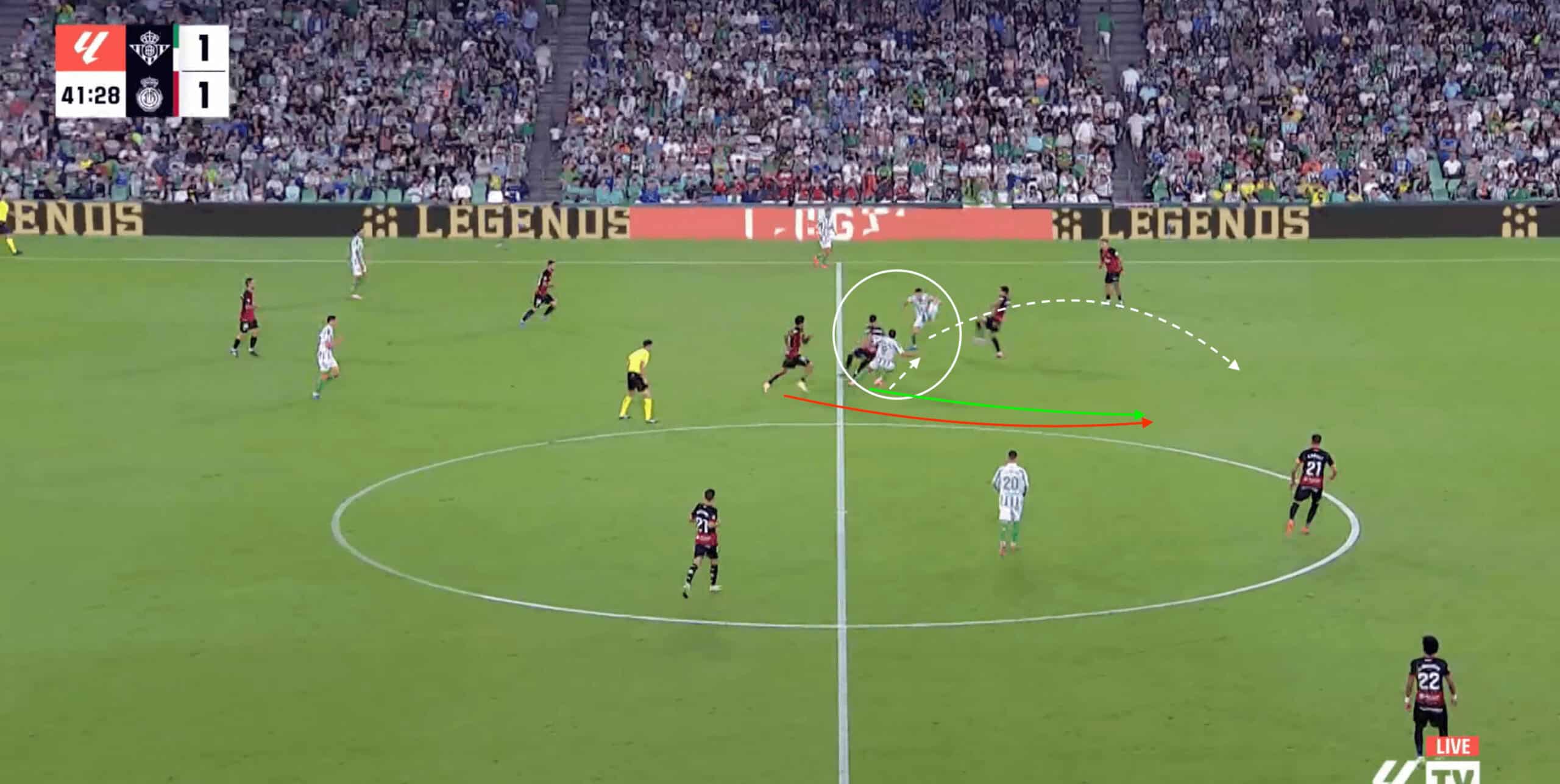
Mallorca has been able to combat these issues with great defensive cohesion and the footballing intelligence to pass off defensive responsibilities when needed.
The Mallorca midfield displayed excellent recovery speed to regain possession in this instance.
But moments like these have yet to be properly exploited by their opposition, and if Arrasate does not address them early on, they could quickly become a systemic issue.
Conclusion
Jagoba Arrasate’s coaching style makes him an impressive tactician in La Liga, and it is no surprise that Mallorca is exceeding its initial expectations with him at the helm.
Talks of European football are certainly premature at this early stage of the season, but Mallorca fans will certainly hope that their club can maintain this positive form and avoid the threat of any potential relegation battle as the season continues.
It will be particularly interesting to see how teams across La Liga can develop their game plans to penetrate Mallorca’s defence more effectively and how Arrasate can preserve this defensive stability as his footballing philosophies at Mallorca become more apparent.

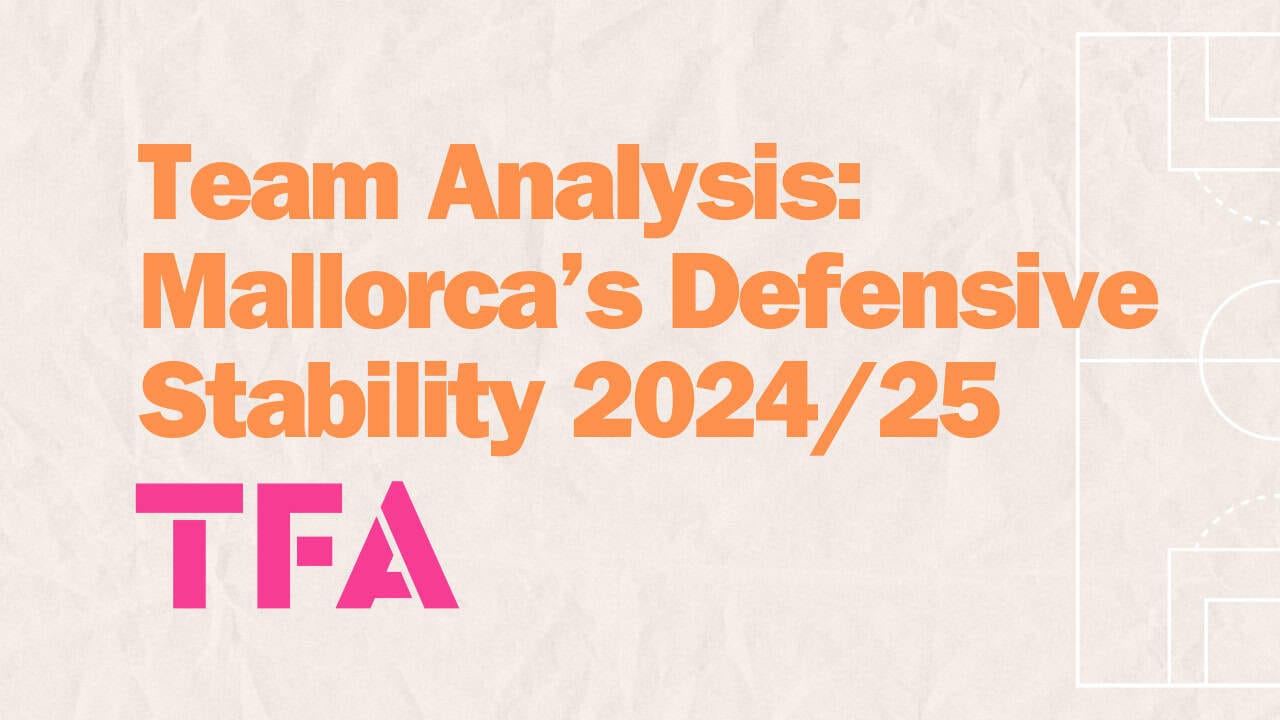



Comments